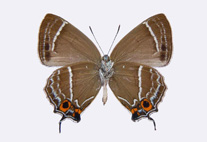Abstract
Species of the Simulium (Simulium) melanopus species-group in Sabah are taxonomically revised by examining type specimens of S. (S.) crassimanum S. (S.) laterale, and S. (S.) nigripilosum, all described from females by Edwards in 1933, and newly collected samples from the vicinity of Mt. Kinabalu. The females of these three species are redescribed, and their males and pupae are described for the first time based on adults reared from pupae. Simulium (S.) liewi Takaoka, 2007 and S. (S.) kinabaluense Smart & Clifford, 1969 are synonymized with S. (S.) crassimanum and S. (S.) laterale, respectively. Simulium (S.) cheedhangi Takaoka, Sofian-Azirun & Ya’cob, 2015 is newly recorded from Sabah. Two new related species, S. (S.) lardizabalae and S. (S.) timpohonense, are described from males reared from pupae. Keys to identify eight species of the S. melanopus species-group in Sabah are provided for females, males, pupae and mature larvae.

